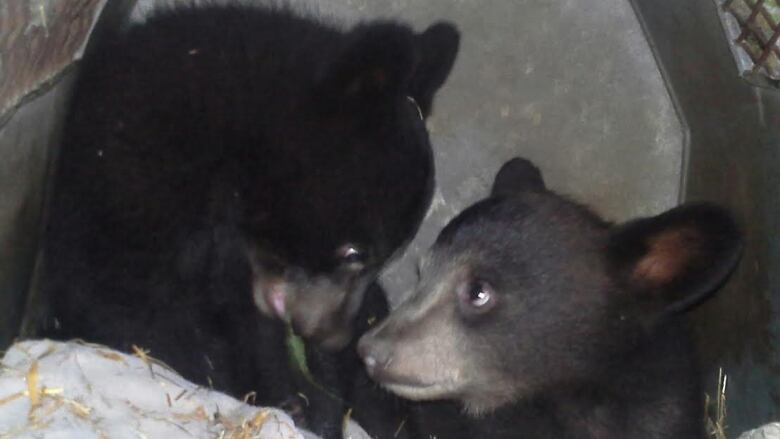Two black bear cubs rescued by Sask. wildlife group
Orphaned cubs will be raised, then released into the wild

A wildlife rescue group in Saskatchewan has two furry little firecrackers in its care.
June and her adopted sister are six-month-old black bears. They were delivered to the Healing Haven Wildlife Rescue Inc. near Dorintosh, Sask., last month.
"They have quite the little attitudes for their size," Mark Dallyn told CBC Saskatchewan's Blue Sky. "They do a bit of rushing, huffing, spitting and smacking the ground whenever we have to deal with them."
He says that's exactly how wildlife experts want it. They don't want the bears to get used to humans, because they would become nuisance bears down the road.
Dallyn said most orphaned black bear cubs aren't so lucky as to be rescued. A social media firestorm erupted this week when a B.C. conservation officer was suspended without pay for refusing to euthanize two black bear cubs.
Saskatchewan doesn't have an official policy on orphaned cubs. But if there is no wildlife rescue for them to go, the province said it's more humane to put them down, rather than have them starved and killed in the wild when they are too young to fend for themselves.
Dallyn agrees with the province. He said the problem is a shortage of wildlife rescue operations. Currently, he is at his maximum with two cubs.
However, construction is underway to expand the operation to a 4.5 acre facility, where 30 bears could live, provided his group raised enough money for food and vet bills.
"That will allow us to take in a lot more instead of them having to be put down."
Bears picnic on ants and berries
Dallyn said June and her sister will get to feast on berries from branches and rotten logs filled with ants that workers drag in so they learn how to forage for themselves in the wild.
The facility always tries to have two bear cubs at a time. He says June and her sister got along right off the bat.
"They do much better and are much happier cubs, they learn from each other. They put all their effort and time into each other."
Dallyn said the best part of his job is when the bears are finally able to be released into the wild.